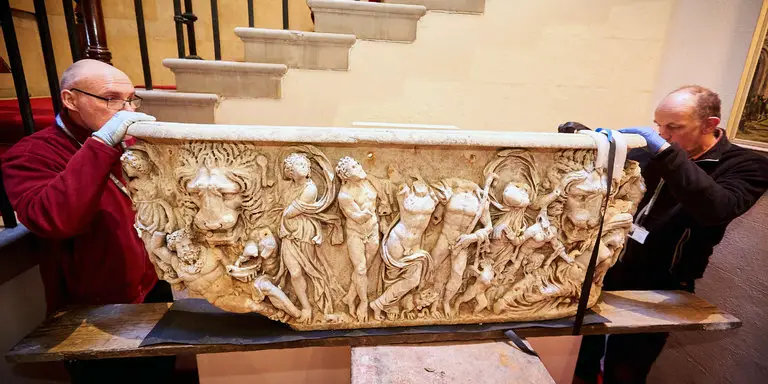A piece of an ancient Roman sarcophagus is no longer a flower pot.
 The ornately carved piece of marble had been the resting place for tulips in the garden of historic Blenheim Palace, a World Heritage site in England notable not only as a World War I soldier hospital but also as the birthplace and boyhood home of former Prime Minister Winston Churchill. But a chance visit by an antiques specialist resulted in a more detailed look at the piece of marble and then to a restoration.
The ornately carved piece of marble had been the resting place for tulips in the garden of historic Blenheim Palace, a World Heritage site in England notable not only as a World War I soldier hospital but also as the birthplace and boyhood home of former Prime Minister Winston Churchill. But a chance visit by an antiques specialist resulted in a more detailed look at the piece of marble and then to a restoration.
The palace had been home to the dukes of Marlborough for a few hundred years. In addition to the World War I hospital stint, the palace served as a home for people evacuated from Europe during World War II.
The piece of marble, as near as the current owners can attest to, appeared on the property in the 19th Century and first served as a storage device for water from a nearby natural spring. Early in the 20th Century, designers of a palace rock garden decided to incorporate the piece of marble into their display, in the process attaching it to a cistern.
After being told of the significance of the piece of marble, palace owners called in conservationists, who identified the piece of marble as the front of a coffin, without the back, base, or sides. The 550-pound coffin fragment is 6 feet long and 2.5 feet high.
Conservationists say that the type of carving and the people and things depicted —wine flowing from crushed grapes, carved lion heads, depictions of Hercules and of the god Dionysus— dated to the 2nd Century.
Restoration lasted several months, and the piece of marble is now displayed (without flowers or dirt) inside the palace.